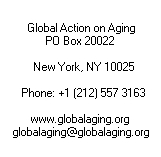
back
Some
related articles : |
 |
States split U.S. Offers Drug Subsidy for Elderly
By: Milt Freudenheim
NY Times, July 6, 2002
With Congressional passage of a Medicare drug benefit
still far from certain, about half the states are at least considering
joining a Bush administration program that will provide federal matching
money to extend drug coverage to elderly people whose incomes are modest
but too high for Medicaid.
Some states are shunning the program, however,
warning of financial risks for their Medicaid budgets and the low-income
people they already serve. In addition, said Ray Hanley, chairman of the
National Association of State Medicaid Directors, many states simply
cannot afford to spend more on health care, even with federal help, at a
time of economic sluggishness and squeezed budgets.
Medicaid already accounts for 20 percent of most
state budgets, and Joan Henneberry, a health policy expert with the
National Governors' Association, said that to maintain services in the
year ended June 30, states used up reserves they had amassed in previous
years, and dipped into money from tobacco settlements as well.
Despite the reluctance of some states, others are
going ahead with participation in the new program. In fact, Tommy G.
Thompson, the secretary of health and human services, returned to
Wisconsin this week to inaugurate the participation of his home state.
Wisconsin officials said 176,400 people with annual
incomes up to $21,265 for an individual or $28,657 for a couple — 240
percent of the official poverty level — would be eligible when the
program starts in September. In Illinois, the only other state that has so
far received federal approval to join the program, 147,000 people signed
up last month.
In addition to those two states, formal applications
have been filed by Connecticut, Florida, New Jersey and South Carolina,
all of which are awaiting approval, and 18 states, including New York,
have either submitted tentative applications or expressed interest,
according to the federal Centers for Medicare and Medicaid Services.
Pressured by advocacy groups for the elderly, at
least 34 states have already adopted their own drug subsidy programs for
low-income people. To this point, these programs have been financed
entirely from state budgets, without federal help. "Now it's very
tempting for a state to bring in some federal dollars to meet a great need
and respond to the elderly, a strong political force," said Cindy
Mann, a Medicaid expert at the Kaiser Family Foundation.
So why are some states concerned? Because under the
new federal program, which will provide each participating state a waiver
from Medicaid law, there will be a federal subsidy ceiling that will rise
no higher, over the five-year span of the waiver, than the total federal
contribution for Medicaid that a state received before the new drug
program.
In other words, from Washington's perspective the new
program will be "budget neutral": for each dollar that a state
receives under the program, it must find a dollar of savings elsewhere in
the government's contribution to Medicaid.
That means particular risk because drug benefits are
the fastest-growing cost for Medicaid, and because the elderly use most of
the drugs, Ms. Mann said. "The states," she said, "are
being asked to gamble with the most volatile group in the program in terms
of their costs."
"The waivers put all the risks onto the states
and the beneficiaries," rather than having the federal government
share the risk, she added. "That is a fundamental change in the way
the Medicaid program is normally financed," a 50-50 federal-state
split in most states.
But officials in Wisconsin and Illinois, the two
states already approved, said they expected savings from the program,
which, they said, will help to buy drugs for low-income people who might
otherwise end up on the regular Medicaid program after spending heavily
for medicine, other health care expenses and, ultimately, nursing homes.
Under the Wisconsin program, said Pris Boroniec,
deputy administrator of health care financing for the state, couples with
incomes below $19,104, or 160 percent of the official poverty level, will
pay, for each prescription, $15 toward the cost of brand-name drugs and $5
for generic drugs. Those with incomes from 160 percent to 240 percent of
the poverty level will pay all of the first $500 of their annual drug
costs before being eligible for those co-pays.
People with very heavy drug expenses can join the
Wisconsin program when drug costs reduce their gross income to 240 percent
of the poverty level. All participants will pay a $20 application fee.
FAIR USE NOTICE: This
page contains copyrighted material the use of which has not been
specifically authorized by the copyright owner. Global Action on Aging
distributes this material without profit to those who have expressed a
prior interest in receiving the included information for research and
educational purposes. We believe this constitutes a fair use of any such
copyrighted material as provided for in 17 U.S.C § 107. If you wish to
use copyrighted material from this site for purposes of your own that go
beyond fair use, you must obtain permission from the copyright owner.
|



